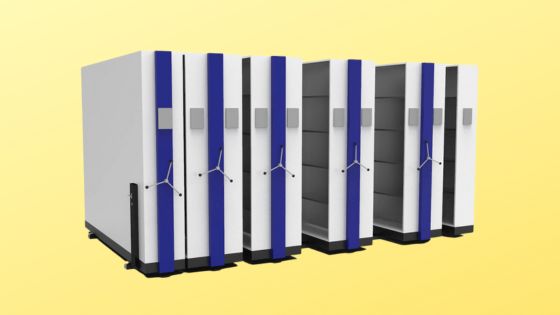Compact storage, also known as high-density storage, refers to a method of storing materials that maximizes the use of available space. This method can be used in a variety of settings, including offices, libraries, warehouses, and retail stores. While there are several advantages to using compact storage, there are also some disadvantages to consider.


Advantages of Compact Storage:
- Increased Storage Capacity: The primary advantage of compact storage is that it allows for increased storage capacity. By utilizing space more efficiently, compact storage can store a greater number of items in a smaller footprint. This can be particularly useful in settings where space is limited, such as small offices or retail stores.
- Space Savings: Compact storage can save significant amounts of space by reducing the amount of floor space needed for storage. This can free up valuable floor space for other uses, such as additional workstations or display areas. In addition, compact storage can reduce the need for costly building expansions or renovations.
- Improved Organization: Compact storage can also improve organization by providing a more structured and orderly storage system. With designated storage areas and shelving, items can be easily identified and retrieved, reducing the time and effort needed to find specific items.
- Enhanced Security: Compact storage can also enhance security by providing a more secure storage environment. With lockable doors and security features, items can be protected from theft or damage.
- Environmental Benefits: Compact storage can also have environmental benefits by reducing the amount of energy needed for heating and cooling. By using less space, compact storage can also reduce the amount of waste generated by the facility.
Disadvantages of Compact Storage:
- Higher Upfront Costs: One of the main disadvantages of compact storage is that it can be more expensive to install than traditional storage methods. This is because compact storage requires specialized equipment and installation, which can be costly.
- Limited Accessibility: Compact storage can also have limited accessibility, as items may be stored in a more compact and condensed manner. This can make it more difficult to locate and retrieve specific items, particularly if the storage system is not properly labeled or organized.
- Maintenance Requirements: Compact storage systems may also require more maintenance than traditional storage methods. This is because the systems are more complex and require specialized equipment to maintain.
- Limited Customization: Compact storage systems may also have limited customization options. This can be particularly challenging for organizations with unique storage needs or requirements.
- Safety Concerns: Compact storage systems may also pose safety concerns, particularly if they are not properly installed or maintained. For example, shelving units may collapse if they are overloaded or improperly secured, which can pose a risk to employees.
Conclusion
In conclusion, compact storage can offer a number of advantages, including increased storage capacity, space savings, improved organization, enhanced security, and environmental benefits. However, there are also several disadvantages to consider, including higher upfront costs, limited accessibility, maintenance requirements, limited customization options, and safety concerns. When deciding whether to implement compact storage, it is important to carefully consider the potential benefits and drawbacks, as well as the specific needs of your organization.
















